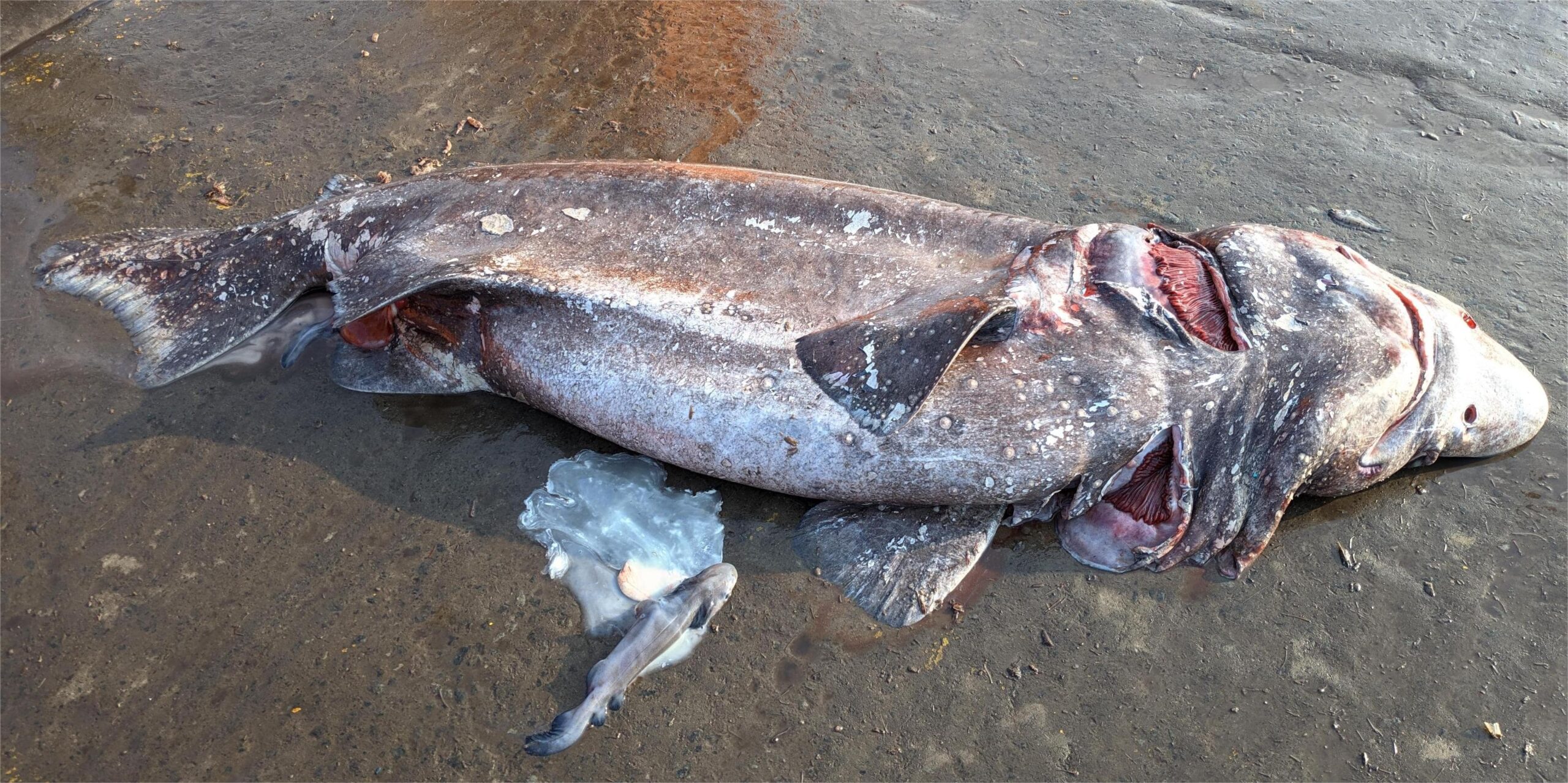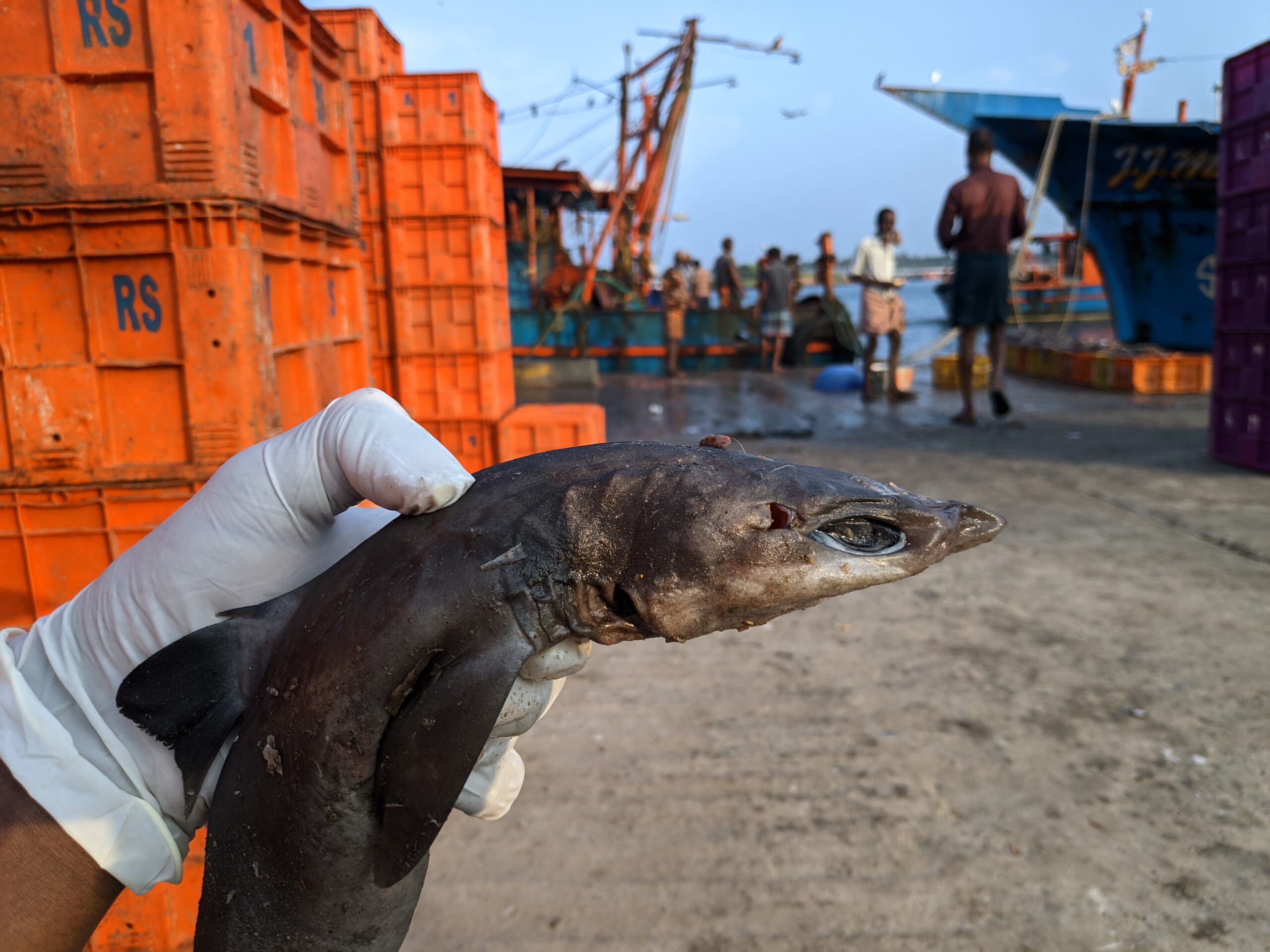A Crisis Beneath the Waves: The Plight of Juvenile Dogfish Sharks
The capture of juvenile dogfish sharks in trawlers is a critical yet overlooked issue, threatening the species’ future and disrupting the marine ecosystem. This blog highlights the problem, its significance, and the conservation steps we can take.
A Fisherman’s Dilemma
“The little ones don’t have much oil in their small livers, and their flesh isn’t consumed by the locals. So, what else can we do? We sell them in bulk for feed preparation along with other low-value fish caught by trawlers,” said a fisherman, echoing the challenges faced by many in his profession.
When asked about catching juvenile gulper sharks, a fisherman explained, “We release many, but they don’t survive. So what’s the difference?” This highlights the tough dilemma fishermen face—balancing ecological conservation with economic survival, often hindered by a lack of conservation resources and support.

Juvenile sharks of varying sizes landed by deep-sea trawlers. Photo © Ebeena Francis

Shark pup with its egg yolk sac still attached. Photo © Ebeena Francis
Understanding the Issue
During our study, one major issue identified was the discard of juvenile sharks in shrimp trawlers, and the lack of proper records hampers accurate population assessments. Dogfish have low reproductive rates, being ovoviviparous and giving birth to just 2–20 pups after a long gestation of 18–24 months.
Unlike many fish species that produce large numbers of offspring, each juvenile dogfish shark plays a crucial role in ensuring the population’s future. This low fecundity means every juvenile lost diminishes the population’s future reproductive potential, making recovery slow and challenging.

bramble shark pup with its egg yolk sac broken, spotted close to its mother. Photo © Ebeena Francis

Juvenile dogfish sharks with the low-value fish by-catch. Photo © Ebeena Francis
Why Juvenile Dogfish Matter
Dogfish sharks play a crucial role in marine ecosystems as mid-level predators. By preying on smaller fish, squid, and crustaceans, they help maintain the balance of marine food webs. A decline in dogfish populations could disrupt these systems, leading to a cascade of changes that affect other species, including those essential to the commercial fishing industry. Without these important predators, we could see shifts in the ocean’s delicate ecosystem balance—changes that could ultimately reach our dinner tables.

Juvenile dogfish shark caught and landed by deep-sea trawlers. Photo © Ebeena Francis

Juvenile dogfish sharks with the low-value fish by-catch. Photo © Ebeena Francis
Securing the Future for Dogfish Populations
Targeted conservation strategies are crucial for safeguarding dogfish populations. Bycatch reduction devices in commercial fisheries can prevent the capture of juvenile dogfish, while marine protected areas allow them to reach reproductive age. Raising awareness about their ecological importance and promoting sustainable fishing practices can help protect these vital predators and maintain a balanced marine ecosystem.

A juvenile dogfish shark caught as by-catch. Photo @ Ebeena Francis

A juvenile shark caught as bycatch. Photo © Ebeena Francis
A Call to Action
Every juvenile dogfish spared today strengthens tomorrow’s ocean. By focusing on conservation, we can ensure that these young lives not only survive but thrive, preserving the balance of our marine ecosystems. It’s time to take action and support sustainable fishing practices to protect these unique creatures and the intricate web of life they help sustain.

A juvenile shark caught as by-catch. Photo © Ebeena Francis
